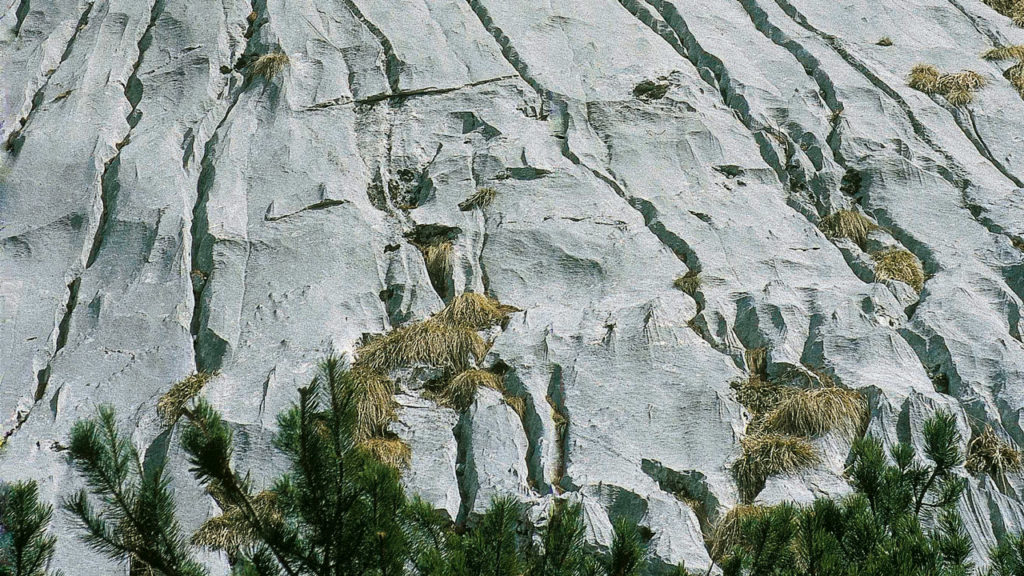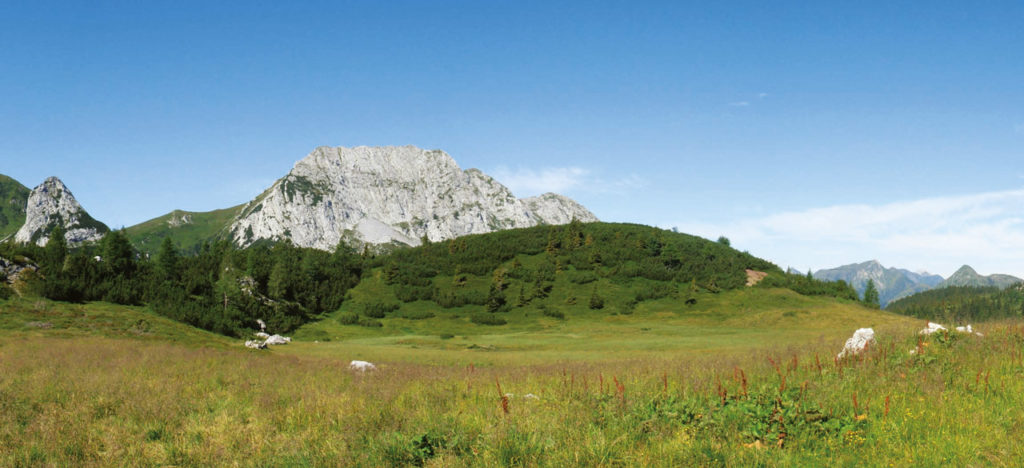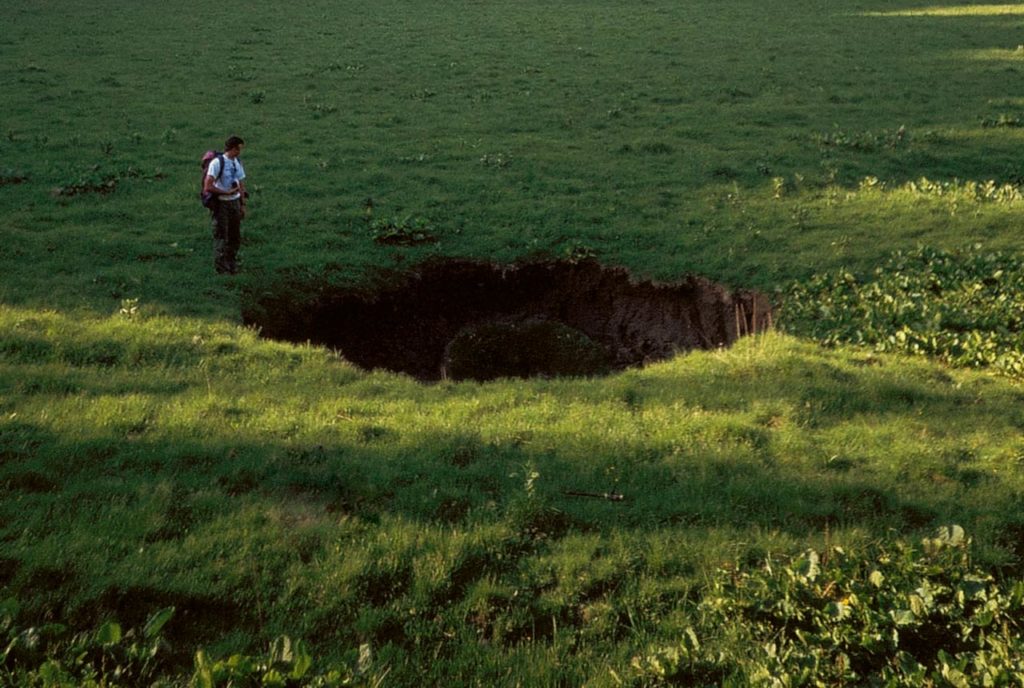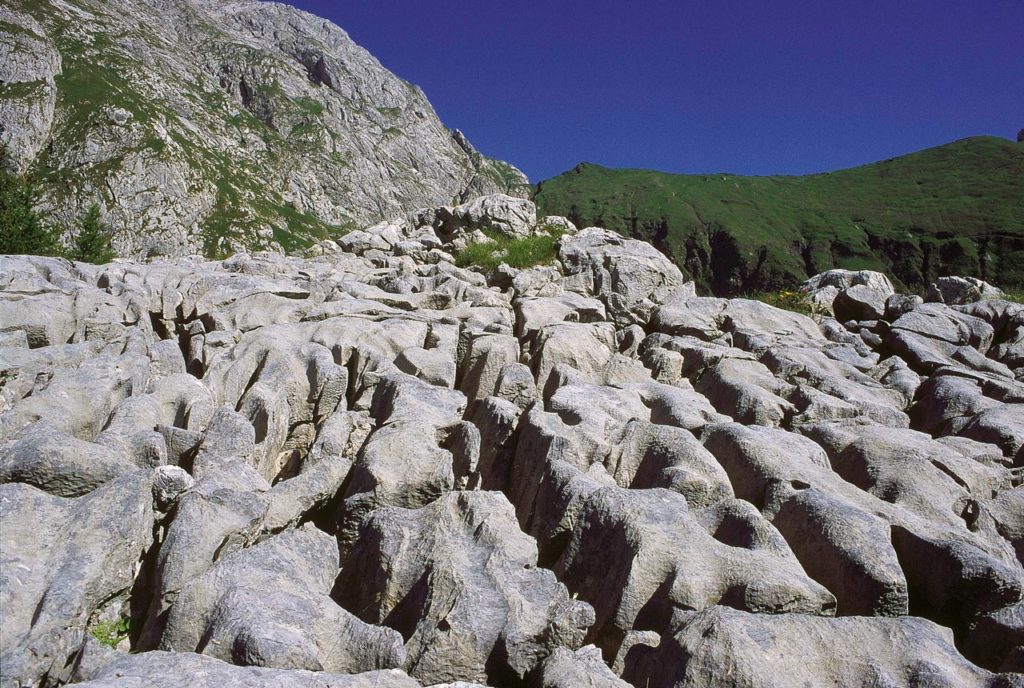Karren
Of the various the superficial karst forms, limestone pavements and dolines are very frequent within the Geopark. The limestone pavements form where the carbonate rocks are rather pure and exposed to the elements. It is common, at these sites, to observe phenomena of surface dissolution, such as grooves, rinnenkarren fields and corrosion pans.
The rinnenkarren themselves, at the origin of various legends (the various “paths of the giants”), may reach a few metres in length and several tens of centimetres or so in width, while they are never more than ten centimetres in depth.
On stretches of flat ground, on the other hand, it is not uncommon to see dolines or sinkholes. The Permian lithotypes exposed on the surface may be deeply corroded by surface waters, giving rise to unusual morphologies such as gullies, landslides, collapses, pinnacles, hollows, due to the solubility of the gypsum fraction of the rock.
To get some idea
Some examples of superficial karst forms in the area of the Geopark
Monte Verzegnis
Area: Val Tagliamento and the Prealps of Tolmezzo
Monte Verzegnis is certainly amongst the areas with the greatest variety of superficial karst morphologies.
Among the macroforms, sinkholes (dolines) are common and mainly found in high mountain meadows. The most striking are found in the funnel of Casera Val, on the gentle slopes below Sella Chianalete and Cima Cormolina, close to the Casere Lovinzola, in the funnel beneath the summit of Lovinzola.
These are mainly sinkholes with very rounded walls and therefore generated by dissolution, with a variable diameter, on average from 2 to 10 metres, but some may be as much as 50 metres across. Sometimes they are aligned along obvious fracture lines.
There are also small uvala, created up by the merging of 3-4 sinkholes. There are also collapse sinkholes and potholes filled with snow.
The microforms one can observe include limestone pavements (termed Rinnenkarren), that may be up to to 10 metres in length in grooves (Rillenkarren) similar to gullies, where the edges of the rocks have been transformed by the karstic phenomenon into sharp cutting margins. More rarely, there are minute, flattish meanders and small corrosion pans called Kamenitza.
Paluzza,
Area: Western Carnic Alps
In the area of Timau, near the Pal Piccolo, various forms of superficial karst are visible, such as the limestone pavements.
Paluzza
Area: Western Carnic Alps
In the area of Chianevate, at Casera Monumenz, at an altitude of 1950-2000 metres we can observe unusual karst crevasse morphologies that have developed in the Devonian limestones and are named, precisely, Monumenz (the Friulian for “monuments”) for their unusual shapes.
Sauris
Area: Western Carnic Alps
Near Sella Malins, north of Sauris, numerous suffusion sinkholes can be observed. These are doliniform depressions in non-karstic rocks, collapses that in general are perfectly circular as a result of collapses due to the creation of voids in the substrate that are generated in the soluble rocks below.




